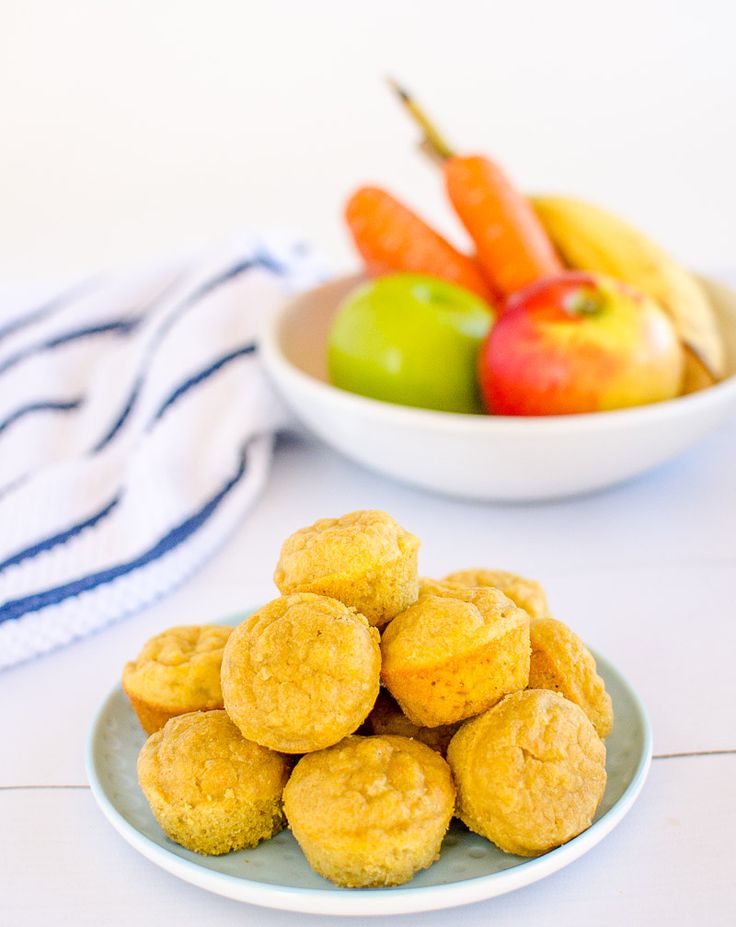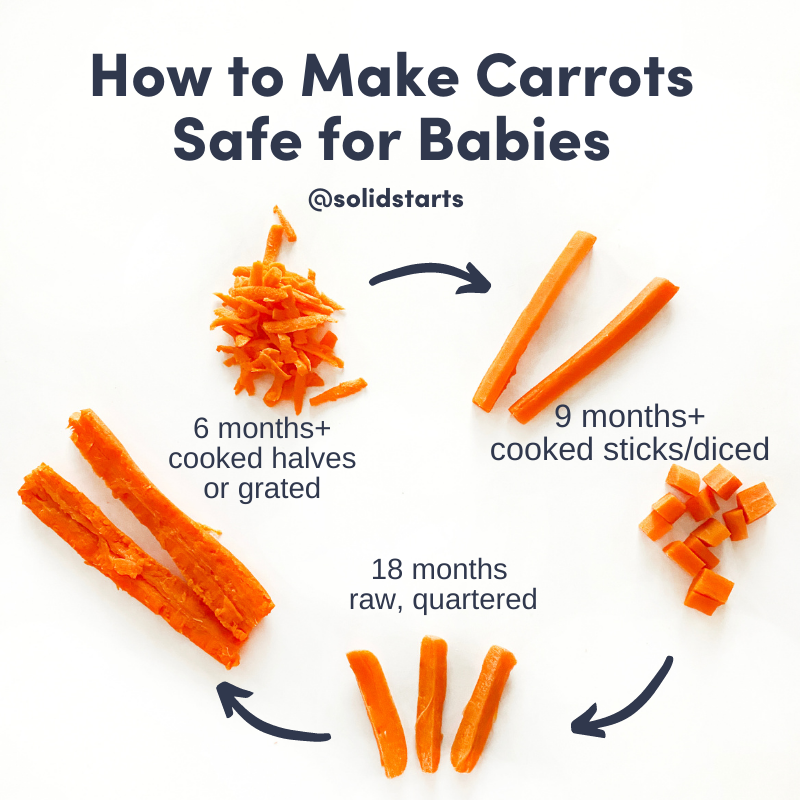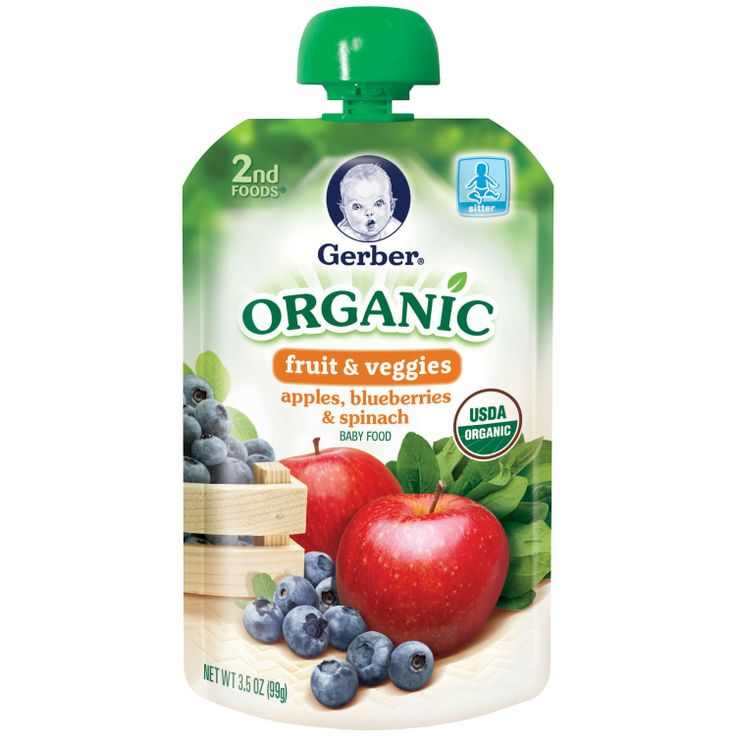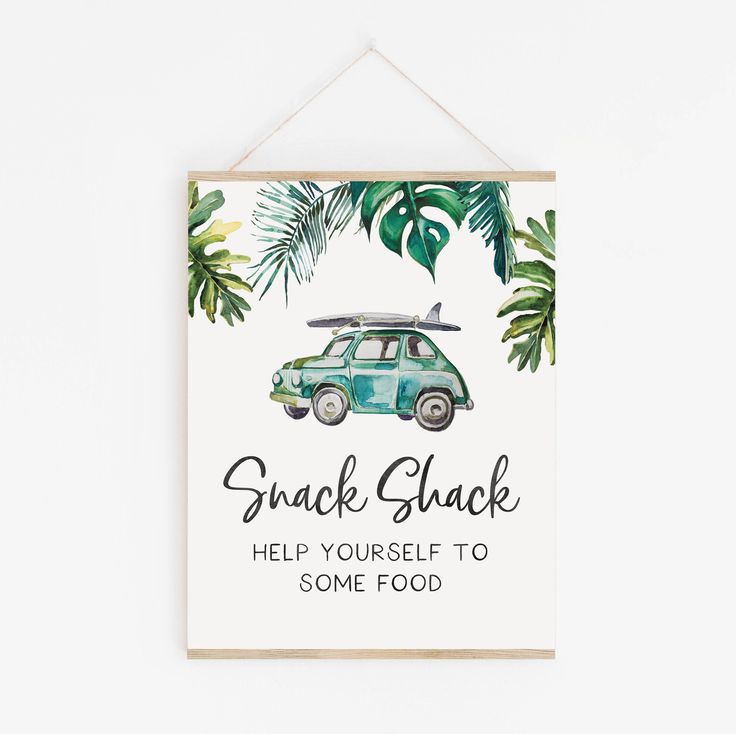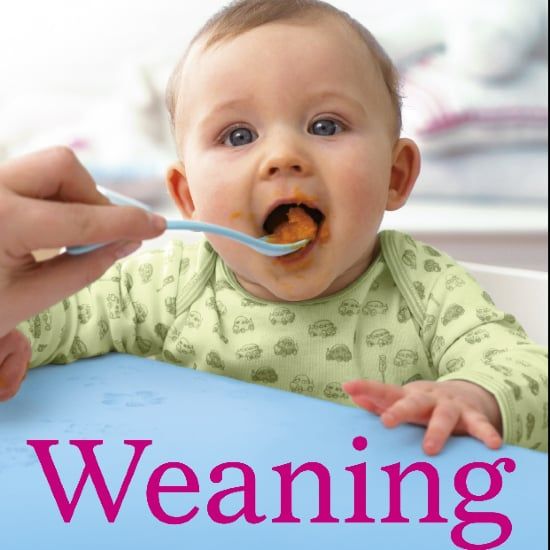Baby gone off food
What to Do When Baby Won't Eat Solids: 7 Simple Steps
When your baby won’t eat solids, it can be stressful. Learn why your baby is refusing food and how to get them to eat solid foods with 7 simple steps!
The spoon hits the floor.
Your baby makes a nasty face.
They might even shudder or gag.
All from a bite, or an attempt to feed your baby solid foods. It’s totally unexpected when babies respond with such disdain for baby food or table food. As parents, we’re often excited about this new milestone and it’s shocking when your baby won’t eat solids.
In real life though, it’s quite common for babies to gag on solids, seem uninterested, and outright refuse food.
While knowing it’s “normal” for babies to not seem interested in solid foods, even though everyone else’s baby seems to be gulping it down by the jar full, it still leaves the question, “How do you get a baby to eat solids?”
Well, I happen to know a thing or two about that. First, because I’ve personally helped a lot of families get their babies eating solids as a pediatric occupational therapist with over a decade of experience, but also because I’ve been there with my own son…
Going through it as a mom was a whole different ball game.
Of course, I knew that it was normal for babies to refuse baby food when it was first introduced, and I also knew that some babies didn’t much prefer baby food, but my Momma heart was worried. The worrying got worse when I watched my son act like he could’ve cared less about the delicious homemade sweet potatoes that I whipped up, as he turned his face away and threw the spoon across the room.
Meal after meal.
Day after day.
And, week after week.
With each passing day that he refused to eat solids, I got more worried, and more frustrated as I’d watch the food I’d prepared literally go down the drain. There came a point when I knew I needed to do more, to put some of my OT skills to use in my home, and that’s what I’m going to share with you here, because I know how stressful it is when your sweet adorable little baby won’t eat solids.
By the end of this guide, you’ll know :
-
- Why your baby is refusing solids
- Why they used to eat solids, but don’t anymore
- How to get them to eat solids and table foods
- Ways to get them more help (if you need it)
*Keep a look out for the free printable at the end too, if your baby is struggling with table foods!
Affiliate links used below. See our full disclosure.
Why Your Baby Won’t Eat Solids
There are a lot of factors that can actually play a role in any baby’s refusal to eat solid food. We’re going to walk through each of them below, but know that the reason your baby isn’t eating solids could be any one or combination of them. With a little detective work, you’ll figure it out!
Also, age has a little do with it, and will help you hone in on what’s going on.
6 or 7 Month Olds That Refuse Solids:
-
- Baby isn’t ready yet – 6 months of age is the perfect time to introduce baby to solid foods, but sometimes the baby isn’t ready.
 Actually, this is really common when the baby is closer to 4 and 5 months old if you’re starting a little earlier, but is still totally normal at 6 months of age.
Actually, this is really common when the baby is closer to 4 and 5 months old if you’re starting a little earlier, but is still totally normal at 6 months of age.
- Baby isn’t ready yet – 6 months of age is the perfect time to introduce baby to solid foods, but sometimes the baby isn’t ready.
Babies are still learning how to move their tongue and bring toys to their mouth, which helps them get used to having foreign objects in there. Each baby is unique and yours may just need some practice if they are in this age range.
They also may still be developing good trunk and head control, without it, eating is difficult!
Check out the American Academy of Pediatrics recommendations for introducing food and make sure your baby is ready for solids. You can also find my guide to Introducing Solids with more details on milestones to look for when 6 months old.
-
- A strong tongue thrust reflex – Most babies usually lose this reflex that helps them not choke if something accidentally gets into their mouth around 4-6 months, but it may linger for some.
If you notice that your baby still thrusts their tongue out every time you touch the spoon to their lips, they may need a little more time. It’s really hard for them to eat when they keep shoving their tongue out of their mouth!
It’s really hard for them to eat when they keep shoving their tongue out of their mouth!
-
- Doesn’t like the way food feels – Solid food is something so new and unfamiliar to babies, it can take a while for them to get used to the new texture in their mouth. Many babies do in fact get used to the feeling of solids, but some don’t.
Read more about that below under sensory.
8, 9, or 10 Month Olds That Refuse Solids:
-
- Sensory – By 8 months of age, most babies are ready from a developmental standpoint, and at this age, it’s definitely time to get the ball rolling, but some babies (like my son) still refuse. One of the most common reasons why older babies still won’t eat solids is because they don’t like the texture.
This boils down to the way their brains are thinking about (or processing) the sensory input they feel (aka the food in their mouth).
This isn’t a bad thing and doesn’t necessarily mean they have any kind of diagnosis, but it does mean we need to take some extra steps to help them tolerate the texture of food better.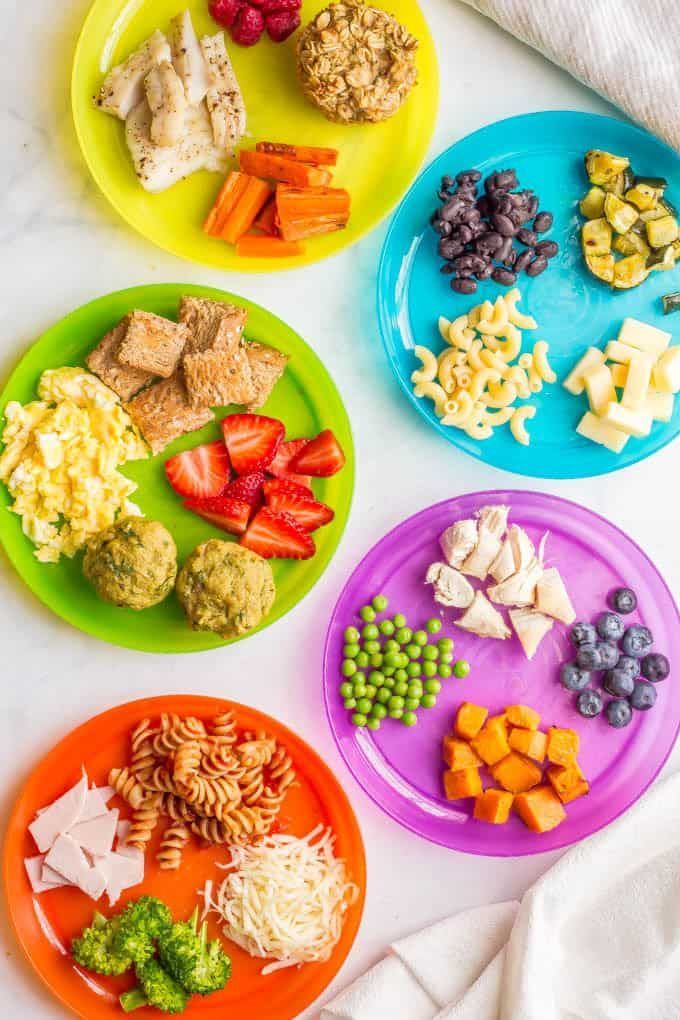 You can head to sensory issues with food to learn more.
You can head to sensory issues with food to learn more.
Babies that are sensitive to different textures usually gag immediately at the sight, touch, or taste of food.
-
- Coordination – Eating actually requires a lot of muscle coordination from opening the mouth, pulling food off of a spoon, closing the mouth, and effectively swallowing.
We take this for granted and don’t even think about it, but for some babies, it just isn’t coming natural.
Babies that are having difficulty with coordination, or oral motor skills (find exercises with that link,) usually gag when trying to swallow or after getting the food into their mouth.
Or, the food may fall out frequently, and babies won’t eat solids because they just don’t know how. When they don’t know how to eat, it isn’t that fun, and there isn’t a lot of interest.
If gagging is something you’re concerned about or is happening often, read more in guide on baby gagging.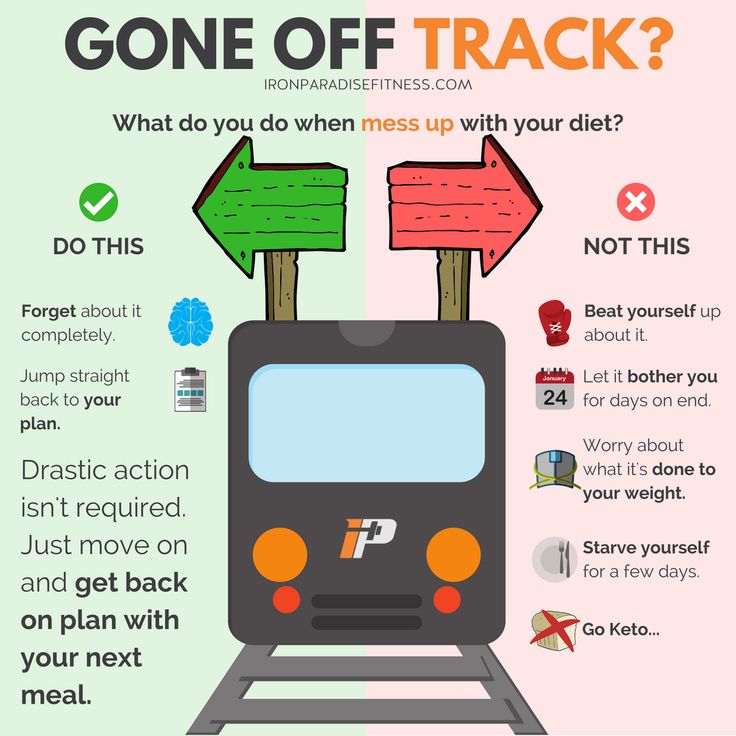
-
- Food allergies – Believe it or not, sometimes babies will avoid certain types of foods because they’ve associated an upset tummy with the yogurt or cheese for example. It doesn’t happen all the time, but it’s something to consider, especially when it’s very specific allergenic food.
The most common types of food allergens are dairy, egg, soy, wheat, tree nut, peanut, fish, and shellfish. Severe eczema is another indicator that food allergies might be present.
Sometimes, signs become more obvious when cow’s milk is introduced.
-
- Not into baby food – While this is probably the least likely reason your baby is refusing solids, it is possible.
If you’ve consistently offered baby food or infant cereal with no interest from your baby and you don’t see any of the sensory or coordination signs we talked about above, then you might just might want to move on to table and finger foods.
One way to do that is using a Baby Led Weaning approach, before you do that though read my BLW pros and cons.
*Get a seat in my free workshop and learn 5 big feeding mistakes that might be stopping your child from learning to eat. We’ll send you a free workbook too!
Why Baby Won’t Eat Solids Anymore (They Used to?)
-
- Some teething babies won’t eat – While it’s not as common, some babies start off eating baby food and then suddenly stop. A frequent cause of this is teething, and some babies teethe for a very. long. time. If your baby’s teeth are swollen, red, and seem to hurt, then this is likely the cause.
Try putting some teething gel on their gums 15-20 minutes before a meal. If you see an improvement, this is likely the culprit. Here’s a natural teething gel I like, but check with your doctor first.
-
- Going through a phase – Babies may get a little bug or slight cold that we aren’t even aware of or have some negative experience with food that seemed too minor to us as the parent, but makes them leery of eating.

- Going through a phase – Babies may get a little bug or slight cold that we aren’t even aware of or have some negative experience with food that seemed too minor to us as the parent, but makes them leery of eating.
If it’s the latter, some sensory sensitivities can develop if a baby goes for a while without eating any food. If this is the case for your baby, you’ll want to follow the steps below and focus on not pressuring your baby to eat. It’s really important that mealtimes are a positive experience.
-
- They’ve outgrown baby food – If your baby is later in their 7th month or older, they may just be sick of solid baby food and ready for the real deal table and finger foods. That may mean it’s time to change up baby’s diet!
I know that seems scary and makes some parents nervous. Don’t worry though, if you think this is why your baby suddenly won’t eat solids anymore, then head to how to transition to table foods.
How to Get Your Baby to Eat Solids
1. The absolute first thing I do with a baby not eating solids is to put a scoop of baby food or some other pureed food like yogurt onto the tray of their high chair.
I know, the mess. It’s soooo important for babies to get messy though! If you’re skeptical, you’ve got to read: Why Babies Should Get Messy Eating. It will totally change your perspective and give you the inspiration to embrace the mess.
2. Encourage your baby to touch the food, but don’t force. Be silly and keep it light. Demonstrate.
If they refuse, try and try again. In fact, at every single meal, put a dollop of that food on their tray or even in a bowl that they can play with and touch. If they won’t touch after a few attempts, offer a spoon for them to stick into the food too.
This is one of my favorite beginner spoons that makes it really easy for baby to get some food onto it.
3. Once your child touches the solid food, you’re on your way! Allow them to touch, spread, and put it all over the tray and themselves. This is wonderful for their sensory processing and will make a huge difference in helping them get used to the texture of solids.
If they get upset once they’ve touched the food, or that they are now all messy, be very calm and reassuring.
Have a wet washcloth ready and quickly wipe them down. And, if this is how they respond, it’s a sign that you need to practice playing with these foods a lot! The more they touch and interact with the food, the closer they’ll be to eating it.
4. When baby has the food on their hand and they’re at least tolerating it, show them how to take their hand to their mouth, so they can taste it. You may need to demonstrate if baby won’t let you guide their hand.
Repeat this several times. After they eat from their hands several times, offer them some solid foods from a spoon.
5. You can also give them a large whole raw carrot or celery stalk at meals. I mean the whole darn thing. The point isn’t for them eat it (and if they can get pieces of it off, take it away), but for them to put it into their mouth.
When they do this, it helps desensitize their gag reflex and they get to practice biting, chewing, and moving their tongue around. It’s amazingly powerful and can make a big impact in a baby accepting solid foods. Make sure you demonstrate and keep offering at every meal.
It’s amazingly powerful and can make a big impact in a baby accepting solid foods. Make sure you demonstrate and keep offering at every meal.
6. Be consistent and patient. I can’t stress this enough, even though it’s often easier said than done! Have regular meals and follow the above steps 1-3 times a day for every meal. You can find sample schedules for babies ages 6 – 7 months, 8 – 10 months, and 11 -14 months if you’d like a guideline to follow.
7. Focus on meals being positive experiences for the baby, even if they aren’t eating anything. As parents, we can bring a lot of stress with us to meals, which can be hard to hide. But, this is definitely a “fake it til you make it” kind of situation.
Take a deep breath, put on a happy face, and work on the above steps. Going into the meal with no expectations of them eating anything will also help keep your frustration level down.
To learn MORE, grab a seat in my free online workshop.
In it, you’ll learn 5 big feeding mistakes that are stopping your baby or toddler from learning to eat table foods! It’s an eye opener and will help you take steps to give them the best start with eating table foods well (even if it already isn’t going well):
Strategies to Use Outside of Meals for Baby’s Refusing Solids
There are a few really powerful strategies you can use away from the highchair that will directly impact your baby eating solids during meals.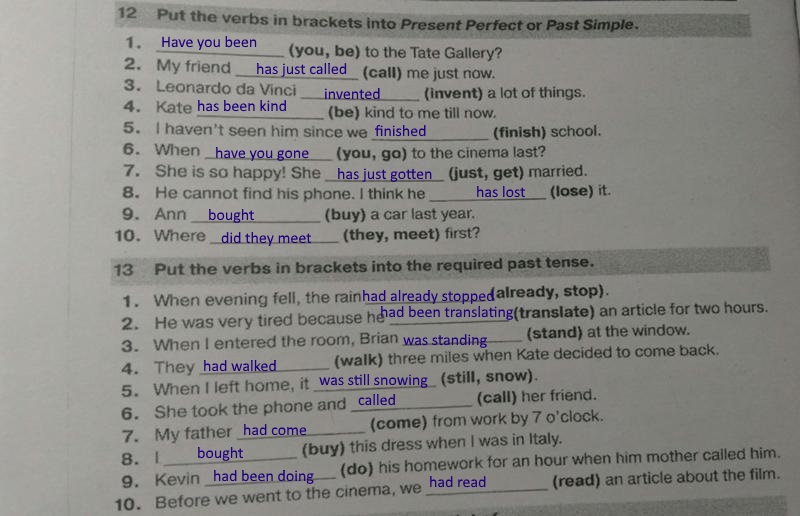 Might seem strange, but if you suspect your baby is refusing because of sensory or coordination difficulties, doing these activities can be total game changers:
Might seem strange, but if you suspect your baby is refusing because of sensory or coordination difficulties, doing these activities can be total game changers:
-
- Brush their teeth – If you haven’t started yet, brush their teeth, and when you do, make sure you’re getting all over their gums and the sides, as well as the top of their tongue.
It only takes a few seconds, but it helps to both desensitize their mouth and improve coordination because the tongue gets practice moving in different directions. If your baby doesn’t like it, take it slow, and try often.
The more often you brush, the bigger the effect. Try for one to three times a day, and consider a vibrating toothbrush (yes, even for babies) for more powerful input in their mouth.
-
- Play in sensory bins – That may be a new term to you or you might be wondering what the heck that has to do with eating, but playing in different textures is super powerful and helps the sensory system understand different textures better.

- Play in sensory bins – That may be a new term to you or you might be wondering what the heck that has to do with eating, but playing in different textures is super powerful and helps the sensory system understand different textures better.
This correlates directly to eating. I can’t tell you how many times I’ve seen a kiddo that plays in sensory bins frequently, suddenly start eating more foods (my son included). Head to Sensory Bin Ideas to learn how to set one up.
-
- Chew on toys – So many babies that won’t eat solids never put toys or teethers in their mouth, which is really easy to overlook. If this is your baby, pull out a bunch of different teethers and have them around the house.
Demonstrate. Dip them in food or juice. Play with them in the bath. The more often they get teethers and toys into their mouths, the more it will help improve the coordination their mouth muscles need to eat and desensitize their gag reflex and sensory system.
I really love this teether because it gets in the back of the mouth and this one vibrates (all my friends get it from me at their baby shower).
Help for the Baby Not Eating Food
I’m not just talking about solid baby food or purees.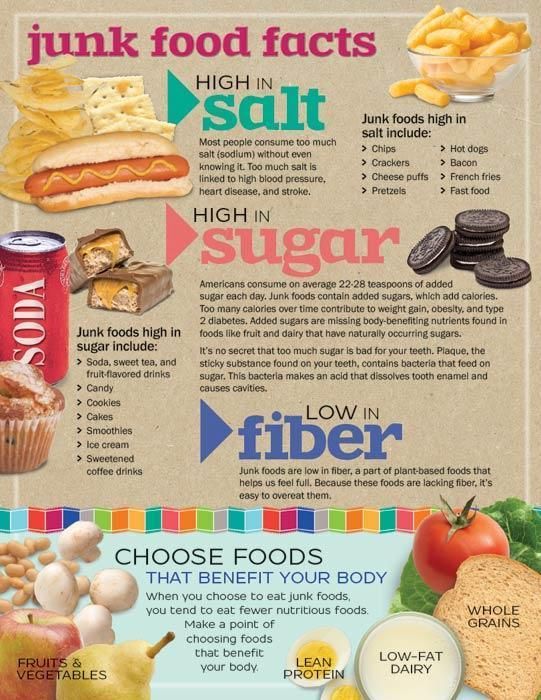 You may have a baby that won’t eat any type of food, like puffs, cut up fruit, or toast. They’re getting older and older. You’re getting worried.
You may have a baby that won’t eat any type of food, like puffs, cut up fruit, or toast. They’re getting older and older. You’re getting worried.
Following the above steps will be incredibly important for your babies too, especially the strategies for outside of a meal. But, you’ll also want to use the steps I outline in getting your baby to eat table foods.
That’s a whole different animal all within itself, and there are some targeting tips that can make all the difference in your baby eating food.
You’ll want to focus on small pieces, and by 9 months of life be attempting table or finger foods.
While I don’t want you to worry, I know it’s tempting to keep waiting it out, and unfortunately, some doctors advise this quite often. This often does not help your baby to learn to eat wide variety of foods.
Babies instinctively learn to chew between roughly 8 and 11 months of age, when they move past that, it can be much harder for them to accept foods. It’s not impossible, and the same steps apply for older children, but it’s much better to be proactive then taking a “wait and see” approach.
It’s not impossible, and the same steps apply for older children, but it’s much better to be proactive then taking a “wait and see” approach.
Puffs, lil cheese curls, and baby mum mum’s are all great for baby’s first foods.
When to Get More Help for a Baby Not Eating Solids
If your baby doesn’t like solid baby food and won’t accept any table foods of finger foods by 9 months old, it’s a good idea to get an evaluation either from the free early intervention program in your state or from a feeding therapist.
You can also read more about typical feeding milestones for babies just to have a reference point. As I said earlier, all babies develop at a different pace and needing a little more help is very common.
Get My Free Printable: Learn to Eat Table Foods Cheat Sheet
There seem to be more questions than answers when you’re under the daily stress of your baby or toddler not eating table foods. Not to mention all of the well-intentioned bad advice that’s often given.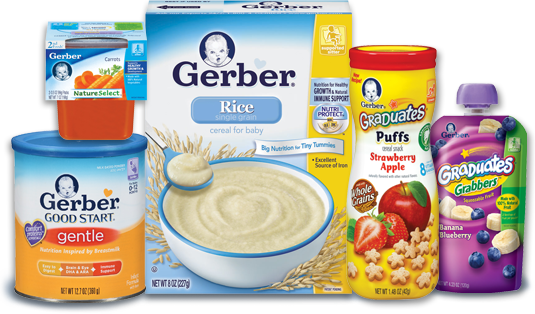 Let’s clear that up.
Let’s clear that up.
I’ve created a free 5 page guide that clearly lists the steps to teach your baby or toddler to eat table or finger foods, plus a FAQ guide for parents to ease their worries when their babies won’t eat!
Get your free Learn to Eat Table Food Cheat Sheet printable here!
More on My Baby Won’t Eat Solids
How to Teach Your Baby to Self-Feed
Mega List of Table Food Ideas
How to Teach Your Baby to Drink from a Straw
The Best Mealtime Utensils and Tools for Babies
Click here to Pin This! (You’ll have as a quick reference)
Alisha Grogan is a licensed occupational therapist and founder of Your Kid’s Table. She has over 17 years experience with expertise in sensory processing and feeding development in babies, toddlers, and children. Alisha also has 3 boys of her own at home. Learn more about her here.
5 Reasons Your Baby Refuses to Eat
When your baby refuses to eat it can be very stressful. One thing that will ease your stress is understanding why your baby isn’t eating.
One thing that will ease your stress is understanding why your baby isn’t eating.
Food refusal in infants and young children is a tough reality for parents to accept. I see 5 common reasons why babies taper off in their eating.
Here, you’ll learn why your baby is refusing to eat and how you can help.
I’ll cover:
- Constipation in babies
- Boredom with the same food options
- Pain
- Feeding practices that are counter-productive
- Readiness to eat
Your baby ate yesterday. And the day before.
But, today, she’s not having food. What’s going on?
One of the most worrisome issues I see new parents face is when their baby refuses to eat.
From being sick to being extra sensitive to texture in food, there are several reason why your baby won’t eat.
When your baby is not eating, it can be a temporary thing, or it can develop into a concerning pattern.
Many babies have a good appetite in the first year or two of life.
They grow at a rapid pace. Their bodies lengthen and they gain weight.
Even their brains are getting bigger and learning is taking off at quite a clip.
All of this infant growth and development takes energy.
As a result, babies generally have a good appetite and a natural drive to eat.
Yet, sometimes babies just won’t eat as well as expected, or as well as they used to.
You’ll need to discern whether this is a temporary phase, or a pattern that’s developing.
Most babies who are in a temporary food refusal phase will show interest in eating and get back on track within a meal or two.
If your baby is not eating and it’s becoming a pattern, he may need more help.
If baby is losing or not gaining weight, appears dehydrated, or is regressing to the bottle and not regaining interest in eating food, then it’s time to see the doctor.
Common Reasons Your Baby Won’t EatI’ve seen many babies who won’t eat in my career as a pediatric nutritionist.
Often, by the time I see them, they’re in a pattern of not eating enough and growth is faltering.
When we get to the root of the challenges, several things have come together to create the issue.
In other words, it’s not usually one thing, but a few things that have created the “perfect storm.”
Let’s take a look:
5 Reasons Your Baby Refuses to Eat. #babyfood #firstfoods #startingsolids #healthyeating Click To Tweet
#1: Your Baby is ConstipatedWhen babies transition from a liquid diet and start to eat solid foods, constipation can set in.
Liquids such as breast milk or infant formula are fairly easy to digest and absorb in the intestines.
But add in solid food and the gastrointestinal tract has to do more work.
This can slow things down.
And this can cause baby losing appetite.
I had a similar experience with one of my kids.
When my first born transitioned from breast milk to solids, we had a heck of a time with constipation.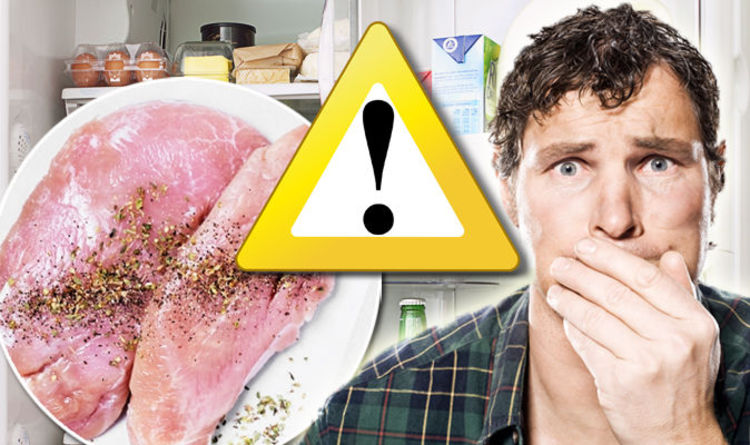
In part, her digestive system was getting used to solids and a new baby feeding schedule.
When babies are constipated, it causes a feeling of fullness.
If the intestinal tract is full of stool, the stomach may fill up, and this may lead to a lost appetite and less eating.
You can help your baby if he’s constipated with home remedies such as diluted prune juice, but take care to use only those that are appropriate for an infant.
Talk with your pediatrician if you’re worried.
Also, as your baby grows, you’ll want to incorporate more fiber into her diet.
#2: Your Baby is Not Eating Because He’s BoredRecently, I met a child who, at the age of 22 months, was still eating baby food.
You could say by this point, he was hooked on smooth purees and was very disinterested in textured food other than crunchy crackers and cereals.
He was also delayed in his self-feeding skills.
Pureed foods are great and many babies love them.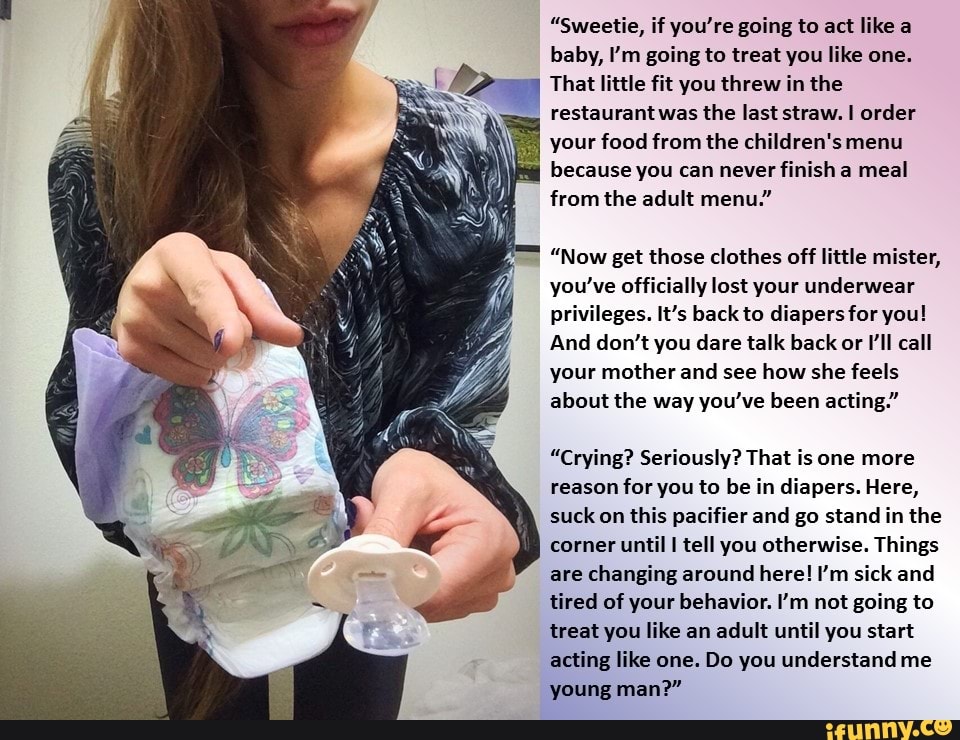
Some babies love them too much, getting hooked on them.
Others don’t get challenged with more texture, receiving “safe” purees and familiar flavors.
After you introduce solids, and by 7 months, most babies should be moving on to more texture, flavor and food experiences. In other words, this is the typical age for an upgrade.
Babies and young toddlers are naturally curious. They want to explore and try new foods.
Holding them back when they are developmentally ready to move on can delay their overall developmental progress, including language skills, self-confidence and of course, nutrition.
One study showed that children who didn’t move on to more textured foods like chopped table food and finger foods by 9 months showed significant picky eating later on at 7 years of age.
If your baby is refusing purees and spoon-feeding, or stuck on baby food pouches, he may be bored with food.
Skip to chopped table foods or try a baby led weaning approach, instead.
Boredom may be a sign your baby needs more texture, flavors, and more autonomy (Hello, finger foods!) with self-feeding.
#3: Your Baby Won’t Eat Because She’s in PainTeething is a common culprit for a baby not eating. His mouth hurts.
But there are other reasons for pain that may be contributing to why your baby won’t eat.
An illness involving a sore throat or ear pain may cause short-term food refusal.
Reflux (a condition where baby’s stomach acids creep up into the esophagus) can cause pain and impede interest in eating.
If this is chronic, your baby may associate pain with eating and develop a pattern of disinterest.
Colic and other digestive problems including gas, cramping or other symptoms can be problematic.
Food allergies or intolerances such as esophageal esophagitis, (EoE), oral allergy syndrome (OAS) or a food allergy to one of the Big 8 (ie, milk, egg, wheat, etc) can cause pain, discomfort and reduce food intake.
An acute illness like a cold can turn any baby off from eating.
However, most babies will resume eating when the illness passes.
If you suspect a more involved, underlying medical condition is the root of your baby’s refusal to eat, see your doctor.
#4: You’re Using Negative Feeding PracticesFeeding should always be a positive experience, for any child, at any age.
When it’s not positive, young children can make negative associations with eating.
For example, if your child is eating with a baby-led weaning approach and is gagging frequently, this could be negative for him.
The same goes for spoon-feeding your baby.
If you force bites of food when your baby is full and doesn’t want any more, you could trigger a negative association with coming to the highchair to eat.
While most babies will recover from minor incidents like gagging, some babies who are more sensitive to their environment, transitions and changes, or a have a sensitive temperament may imprint these negative experiences.
You can imagine, this can make a baby withdraw from food, or at least negatively influence her desire to eat.
To avoid this situation, brush up on your feeding style and feeding practices so they are positive, connected and responsive – this will help you create a positive feeding experience for your baby.
You can learn that and more in my book, The Smart Mom’s Guide to Starting Solids.
Grab this on Amazon#5: Your Baby is a Late BloomerBabies are unique and have individual characteristics, but they all follow along a developmental scheme.
Tackling the different stages of development happens at different times and reflects what we call developmental readiness.
We have stages of readiness for solids, which is a guideline to help you know when your child is ready to take the next step.
For example, babies are generally ready to begin first foods around 6 months.
Some are ready earlier, some are ready later.
It’s important to watch for the signs.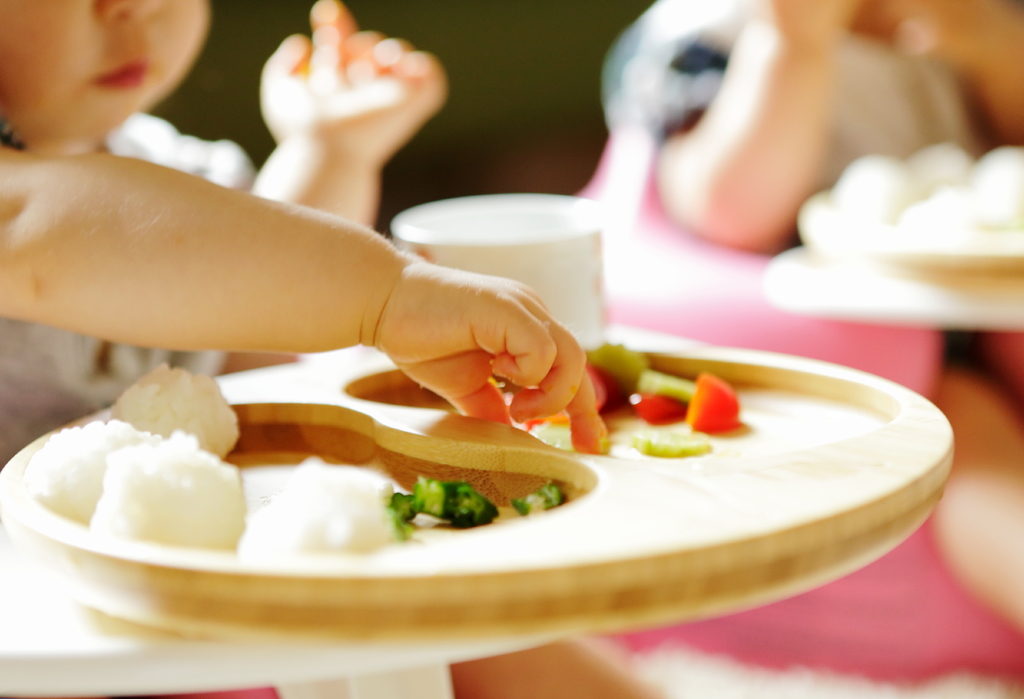 (Read more about those here.)
(Read more about those here.)
Some babies are slower to show signs of readiness for solids.
They are late bloomers, if you will. Kind of like my late readers!
No matter how much we practiced reading skills, they weren’t early readers. They learned on their own time table.
Some children are poorly coordinated in their ability to chew and manipulate food in the mouth. They need more practice.
Some find textures offensive and need more time and experience with them to warm up.
Other babies are more sensitive to the sensory characteristics of food. They may gag when they see, touch or taste food.
This may be why your baby refuses to eat. Don’t fret too much if your baby is a late bloomer.
Stay alert to signs of readiness and provide opportunities for more experiences with food.
One thing you can do is plop a spoonful of puree on the highchair or a spoonful of chopped food and just let your baby mess around with it.
If your baby is holding or touching food, show him how to bring his hand to his mouth.
Remember, keep it positive and let your baby lead. No forcing!
If your baby isn’t ready and you force it, this won’t be fun or pleasant and may lead to disinterest or a situation where your baby refuses to eat.
[Watch our YouTube video about Baby Feeding: Which Mistakes to Avoid]
Get More Help if Your Baby is Not EatingHow long should you wait to do something when your baby refuses to eat? Should you wait it out?
At what point is waiting it out potentially causing more challenges down the road?
In most cases, your baby will sort things out on his own, provided you offer regular, balanced meals and snacks, have a positive feeding environment, and stay relaxed.
Here are the Signs You Need to Visit the DoctorIt’s time to head to the doctor’s office if your baby:
- isn’t moving on to more textured food by 9 months
- still refuses to eat
- shows little interest in eating
- seems distressed with eating
- appears dehydrated
- is losing weight
In this case, it’s best to further investigate the root issues, such as a food intolerance or allergy, digestive problems, or sensory challenges.
Perhaps your baby needs a feeding evaluation, or you need a dietitian to evaluate your feeding approach including the feeding schedule, food offerings and feeding interactions.
Help Your Baby Love Food!Feeding your baby should be a positive, learning experience.
For more resources and support in this area, check out the following materials:
Try New Food Workbook is a very helpful resource for parents who may be entering into the picky eating phase.
It’s also a great way to learn how to prevent picky eating!
Listen to The Nourished Child podcast for free information about baby nutrition and feeding.
Tune in to these podcast episodes for more inspiration!
Simple Tips for Adding New Foods
Reasons Your Child Won’t Eat (& What You Can Do)
You may also want to read:
- 11 Stool Softener Foods for Kids
- My Favorite Children’s Books about Nutrition
- 25 Allergy Free Snacks for School
BABY FEEDING MISTAKES | AVOID These 4 Mistakes & Start Your BABY on a HEALTHY EATING PLAN
Watch this video on YouTube
This post was updated on January 17, 2021 to include more resources.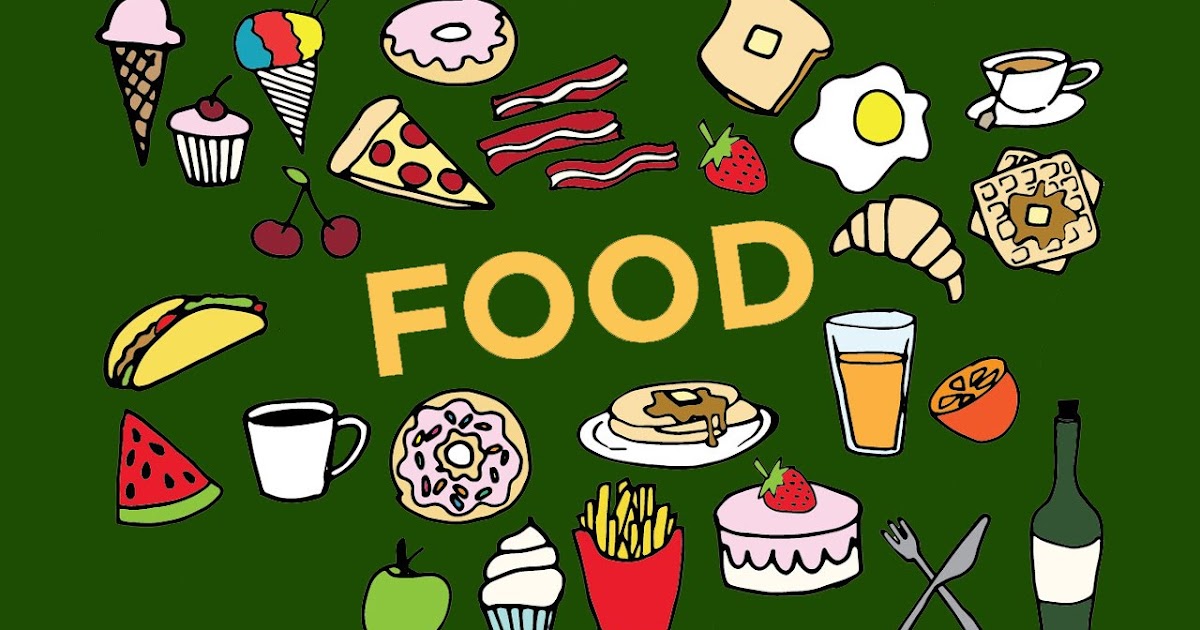
8 reasons why a child refuses to eat
Our life is impossible without food. From birth, a child has an instinct for eating. And with age, he does not cease to understand whether he wants to eat or not. Therefore, forcing a child to eat on the part of the parents is wrong. If the child grows and develops normally, then let him eat what he wants and how much he wants. Forcing the baby to eat, you can easily break his natural sense of proportion, and then fight overeating and being overweight. All children are different and it is important to give the child the amount of food that will satisfy his needs. And these needs depend on various factors. If the little one refuses to eat, try to understand the reason for this behavior. nine0003
1. The child is not hungry. Even if a long time has passed since the last meal, it is possible that the child is still full. Parents should take into account the calorie content of food and the energy consumption of the child. If the meal was high in calories, but after that the child watched cartoons and did not run in the yard, then he may not want to eat for a long time. Physical activity encourages the body to expend energy and the child will get hungry faster.
If the meal was high in calories, but after that the child watched cartoons and did not run in the yard, then he may not want to eat for a long time. Physical activity encourages the body to expend energy and the child will get hungry faster.
2. The child does not have a daily routine. It is advisable to feed the baby at about the same time. The optimal portion for a child is two of his palms folded together. In addition, it is necessary that the child every day spend time in the fresh air and go to bed on time. If the child has little active pastime, then do not be surprised that he does not eat well. nine0007 3. The child is ill. Lack of appetite may be a symptom of some disease. Many children begin to eat badly when they are teething. Often the child refuses food when he has a fever. Before forcing a child to finish eating porridge, make sure that he is healthy.
4. The child "interrupts" the appetite. Sometimes snacking can cause a child to eat poorly at lunch or dinner. Do not give any cookies or sweets if you plan to sit down at the table soon. nine0007 5. The child does not like a particular dish. The baby may not refuse food in general, but simply milk porridge or borscht. Everyone has their preferences and kids have them too. Consider your child's preferences when planning menus. Accustom the little one to new tastes gradually, in the same way as complementary foods were introduced. Children are reluctant to perceive new tastes, but if given often and a little bit, they get used to it.
Do not give any cookies or sweets if you plan to sit down at the table soon. nine0007 5. The child does not like a particular dish. The baby may not refuse food in general, but simply milk porridge or borscht. Everyone has their preferences and kids have them too. Consider your child's preferences when planning menus. Accustom the little one to new tastes gradually, in the same way as complementary foods were introduced. Children are reluctant to perceive new tastes, but if given often and a little bit, they get used to it.
6. The child has psychological problems. Children subtly feel the psychological situation in the family. Refusal to eat may be associated with a desire to attract the attention of parents to their person. nine0007 7. The child developed an eating neurosis. If parents force the child to eat regularly, without taking into account his desire, then the baby may develop food neurosis. Such children begin to cry at the sight of a plate, they can run away to another room and become hysterical.
8. All children are different. Do not compare your child with other children. All have their own physical characteristics. If the baby eats little, just make these small portions as healthy and nutritious as possible, but do not force him to eat more than he wants. nine0003
Do not treat the refusal of food as disobedience and whims. Try to understand what the problem is and solve it. Think and analyze your behavior, did you do everything as it should? If you realize what you did wrong, then try to quickly correct your mistakes. Use methods such as fairy tale therapy. Before going to bed, the child will listen with pleasure about his favorite fairy-tale hero, who ate well, so he was strong and courageous. Try to interest the child in the beautiful design of the dish. Ordinary products can become a castle, a car, a cute face - there is room for parental imagination to roam. nine0003
Refusal to eat | Nestlé Health Science
- Nestlé Health Science
- health care
- Refusal to eat
Refusal to eat is a feeding problem that usually occurs when the baby is six to nine months old. If the child does not eat due to excessive refusal to eat or lack of appetite, this can lead to growth problems.
If the child does not eat due to excessive refusal to eat or lack of appetite, this can lead to growth problems.
Why is my child not eating?
As your baby develops, he will begin to establish a feeding routine with you. If you or your baby is not easily recognizing feeding signals, it can lead to confusion and refusal to eat.
An underlying medical condition may also be present, which can upset the child and lead to refusal to eat. A traumatic experience from eating a food that causes choking or vomiting can also lead a child to refuse to eat. nine0003
Symptom analysis
Could it be CMPA?
A child who does not eat or refuses to eat presents a typical symptom for infants with Cow's Milk Protein Allergy (CMP) .
Children with CMPA usually have more than one symptom, and these symptoms can be very different from each other.
If your child refuses to eat it could be CMPA.
You may have noticed other symptoms (besides refusal to eat) that may affect other parts of the child's body. nine0003
For a simple and easy way to check for typical symptoms associated with CMPA, you can use our Symptom Checker.
It will allow you to select all cow's milk symptoms your baby may have. You can then discuss this with your doctor.
In any case, if you have any doubts or concerns about your child's health, you should consult a healthcare professional as soon as possible. nine0009
Other symptoms of cow's milk protein allergy
ANAPHILACTIC SHOCK
View product
CRYING AND COLIC
View product
nine0002 CONSTIPATION
View product
COUGH
View product
DIARRHEA
View product
ECZEMA
View product
nine0003
GROWTH DISTURBANCE
View product
urticaria
View product
RASH
View product
nine0002 REFLUX AND BUCK
View product
Runny nose and sneezing
View product
EDITEC
View product
VOMITING
View product
HRIP
View product
IMPORTANT NOTE: : It is possible to continue breastfeeding if the infant is allergic to cow's milk protein.



